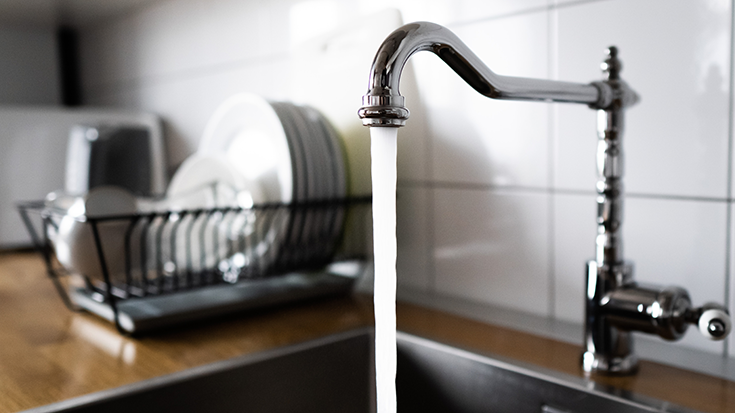
CDC Says Patients Filling Respiratory Devices with Unsafe Water
According to a study published by the CDC in Emerging Infectious Diseases, too many people use tap water in their home medical devices such as CPAP machines.
Investigators arrived at that conclusion after surveying a group of people selected to be representative of the U.S. population by sex, age, region, race/ethnicity, and education about their use of water in these devices. The survey found —
- 33% of respondents incorrectly answered that tap water does not have living things or bacteria present in it.
- 62% said that tap water could be used for rinsing sinuses, 50% said it could be used for rinsing contact lenses, and 42% said it could be used in respiratory devices.
- 24% reported filling humidifiers or CPAP machines with tap water, 13% reported using tap water for nasal rinsing, and 9% reported using tap water for rinsing contact lenses.
The authors note that “In the United States, biofilm-associated pathogens such as Pseudomonas spp., NTM, and Legionella spp. are responsible for a large portion of the 120,000 hospitalizations, 7,000 deaths, and billions in direct health care costs annually related to waterborne diseases.” They believe the findings of this survey highlight the need to reinforce messaging around the appropriate uses of tap water and better recommendations on using water in medical devices at home. Read More

Is a New ARDS Treatment on the Way?
California investigators believe they may have found a peptide that could potentially treat or even prevent acute respiratory distress syndrome (ARDS) in people with severe lung injury.
Working in a mouse model, they discovered that the C6 peptide blocks the voltage-gated Hv1 proton channels in neutrophils, thus suppressing production of the damaging reactive oxygen species, proteases, and cytokines that can trigger uncontrolled inflammation and fluid buildup in severely damaged lungs.
Further study showed that C6 can also inhibit Hv1 in human neutrophils, shutting down the same inflammatory pathways as it did in the mice. The fact that C6 worked without toxic side effects in the mice has led the investigators to speculate that the treatment would also work in humans.
The researchers plan to build on these findings by continuing their study of C6, C6 derivatives, and small molecule mimetics isolated by the team to treat inflammatory diseases found in the lungs and other tissues. They will also assess how long the peptide remains in the body and how it is eliminated.
“Despite five decades of effort, there are no disease-modifying drugs that can treat patients with acute respiratory distress syndrome,” said study author Dr. Steven A.N. Goldstein, distinguished professor of pediatrics, physiology, and biophysics and pharmaceutical sciences and vice chancellor of health affairs at the University of California Irvine. “The C6 peptide shows promise as a therapy for this damaging lung disease, giving hope to patients where so little exists now.”
The study was published by iScience. Read More

“Living Treatment” Targets VAP
Using a version of the bacterium Mycoplasma pneumoniae that was modified to remove its ability to cause disease, researchers from Spain have designed the first “living medicine” to treat infections of the lungs caused by Pseudomonas aeruginosa.
The modified bacterium targets the biofilms that P. aeruginosa forms on endotracheal tubes, creating impenetrable structures that make antibiotics ineffective and can lead to ventilator-associated pneumonia (VAP). The modified bacterium dissolves the biofilms.
The investigators used the treatment along with antibiotics that could not work by themselves in a mouse model, finding it doubled the survival rate in the mice. In addition, no toxicity was seen with a single high dose, and the immune system cleared the modified bacterium within four days.
From there, they tested the treatment on P. aeruginosa biofilms collected from the endotracheal tubes of ICU patients. Results showed the treatment penetrated the barrier and successfully dissolved the biofilms.
More testing is underway, and the ultimate treatment in humans is expected to be delivered using a nebulizer.
The study was published by Nature Biotechnology. Read More
Email newsroom@aarc.org with questions or comments, we’d love to hear from you.












